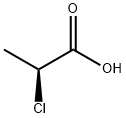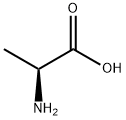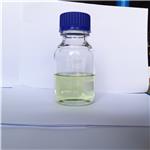
(S)-(-)-2-Chloropropionic acid
- Product Name(S)-(-)-2-Chloropropionic acid
- CAS29617-66-1
- CBNumberCB3161267
- MFC3H5ClO2
- MW108.52
- EINECS411-150-5
- MDL NumberMFCD00064205
- MOL File29617-66-1.mol
- MSDS FileSDS
Chemical Properties
| Melting point | 4 °C |
| alpha | -14.5 º (c=neat) |
| Boiling point | 77 °C/10 mmHg (lit.) |
| Density | 1.249 g/mL at 25 °C (lit.) |
| vapor pressure | 5hPa at 20℃ |
| refractive index | n |
| Flash point | 140 °F |
| storage temp. | 2-8°C |
| solubility | DMSO (Slightly), Methanol (Slightly), Water (Slightly) |
| form | Liquid |
| pka | 2.83(at 25℃) |
| color | Clear light yellow |
| optical activity | [α]25/D -14°, neat |
| Water Solubility | soluble |
| BRN | 1720257 |
| LogP | 0.82 at 20.5℃ |
| CAS DataBase Reference | 29617-66-1(CAS DataBase Reference) |
| EWG's Food Scores | 1 |
Safety
| Symbol(GHS) |
  
|
|||||||||
| Signal word | Danger | |||||||||
| Hazard statements | H312-H318-H302+H312-H314-H373-H290-H302 | |||||||||
| Precautionary statements | P260h-P301+P330+P331-P303+P361+P353-P501a-P234-P260-P264-P270-P301+P330+P331+P310-P303+P361+P353+P310+P363-P304+P340+P310-P305+P351+P338+P310-P390-P405-P406-P501-P280-P305+P351+P338-P310 | |||||||||
| Hazard Codes | C | |||||||||
| Risk Statements | 21/22-35-48/22 | |||||||||
| Safety Statements | 23-26-28-36/37/39-45 | |||||||||
| RIDADR | UN 2511 8/PG 3 | |||||||||
| WGK Germany | 1 | |||||||||
| RTECS | UA2451950 | |||||||||
| HazardClass | 8 | |||||||||
| PackingGroup | III | |||||||||
| HS Code | 29159080 | |||||||||
| NFPA 704: |
|



